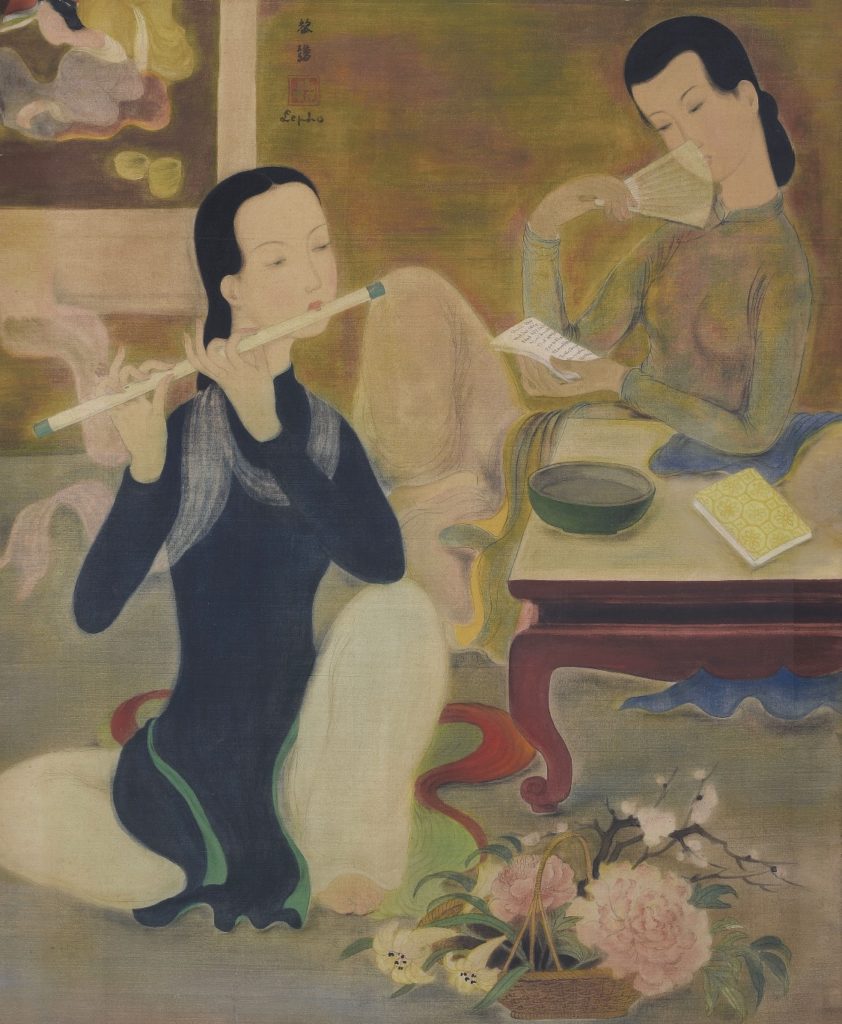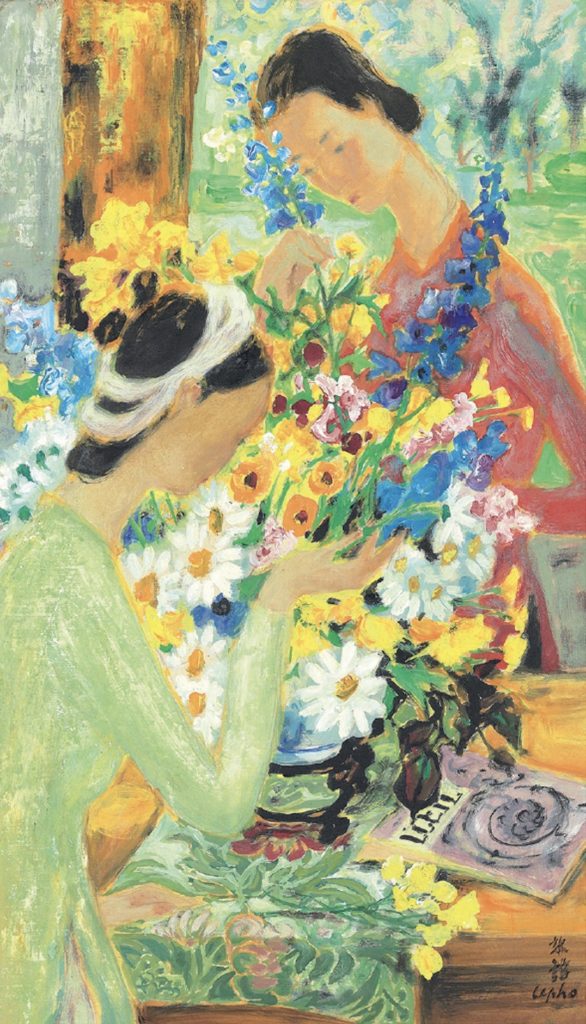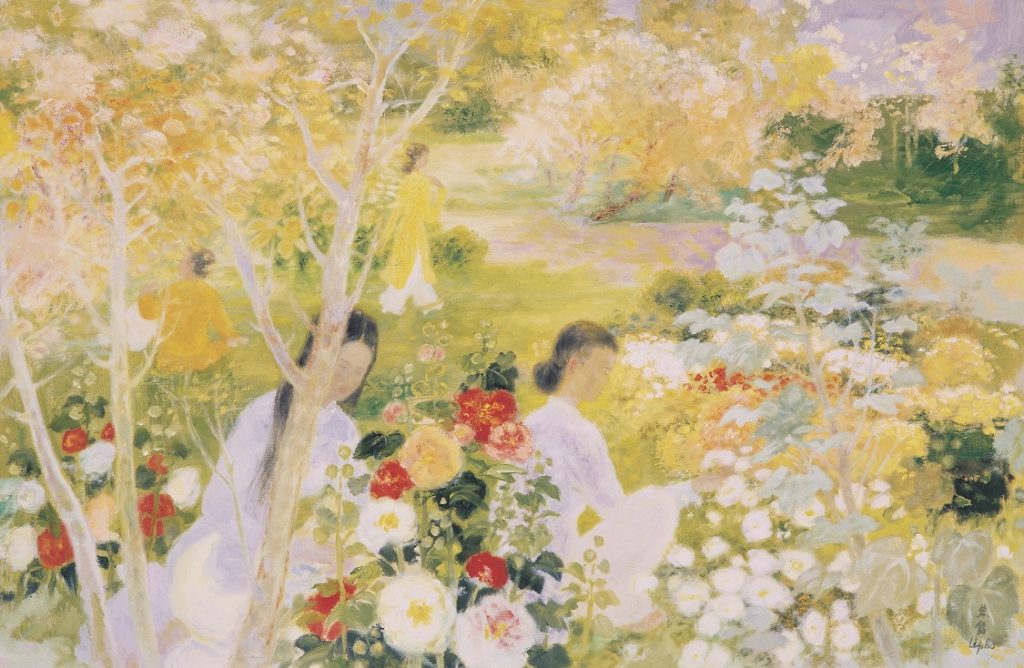Le Pho’s Three Periods: Early Works – Romanet – Findlay
If we consider Le Pho’s work over his life (1907-2001), three periods appear, each with a distinct history and style. The first period from the late 20’s till 1945 is qualified as « early works », the second period, 1946-1962, named the Romanet’s period and finally, the Findlay’s period from 1963 to his death in 2001.
The three periods are justified each by very distinct styles.

During the first period, we can see the emancipation of a very young and brilliant talent.
Already his work created at the « École des Beaux-Arts », under the supervision of Victor Tardieu (1870-1937), was successful and recognized by collectors and institutions.
Not to mentioned his subtle silks in their composition and tones made after his first visit in Europe including Paris (1931-1932).
Or his few lacquers, technically beautiful, he had to abandon due to an allergy to lacquer. This period of enthusiasm, creativity, discovery of new techniques and new countries will freeze during the war.
The Romanet’s period is charged with the loss of stability in humans and in the events.

His silks will use the same techniques but his colors will change as if, through more intensity, the work needed to tell instead of being just descriptive ; the painter becomes more conflicting : the confucian softness gives way to the harshness of the times.
The memory of the war and the nazi barbarism, the state of civil war in Vietnam, the decolonization and its meanders : so many questions trouble the painter who moved definitively in Paris in 1937.
Romanet is the name of the French gallerist who always advised Le Pho and helped him exhibit his work for many years.
In 1963, Le Pho (with his friend Vu Cao Dam) will sign a contract near exclusive with the well-known north american gallerist, Wally Findlay.
He will reorientate the style of the painter, first, in encouraging him towards certain trends he developed in the early 50’s and, secondly, by modernizing his offer.
The inheritance bear fruit as Le Pho chooses bright colors as he continues his work showing his long last admiration for Matisse. This change will show through the use of strong brush strokes on near exclusively large oils on canvas where color is king.

Le Pho pursue his art with much enthusiasm as he paints his favorite themes such as the Vietnamese ladies or bunch of flowers (always painted, freshly cut) and, also, because the contract allows him to access the american market, a dream for all european and asian artists. The Findlay’s period will last close to 20 years till Le Pho was victim of a terrible road accident (in 1990) after which he will never be able to paint again.
These periods, evidently, overlap with each other. Dates should not be seen as strict delimitations, but – as periods of the past – and periods of influence. Over the years, a painter allows himself repetitions, repentance and amnesia.
I would like, if I’m allowed, to mention two personnel memories.
Le Pho, in his apartment Rue de Vaugirard in Paris, would allow his admirers to photograph him with his paint brush in the right hand and his palette in the left hand : but the painting behind him remained unfinished year after year…
Also, one day in 1995, I remember asking him : « Master, which is your preferred period ?».
With no hesitation, he answered « my Findlay period ».
Jean-François Hubert